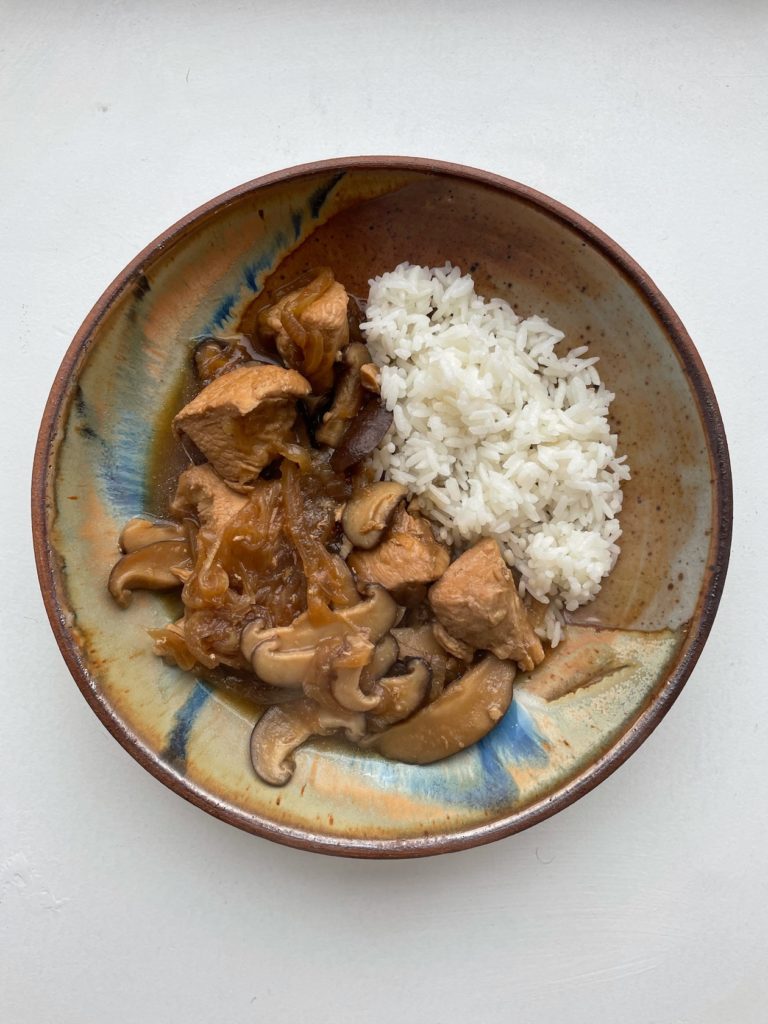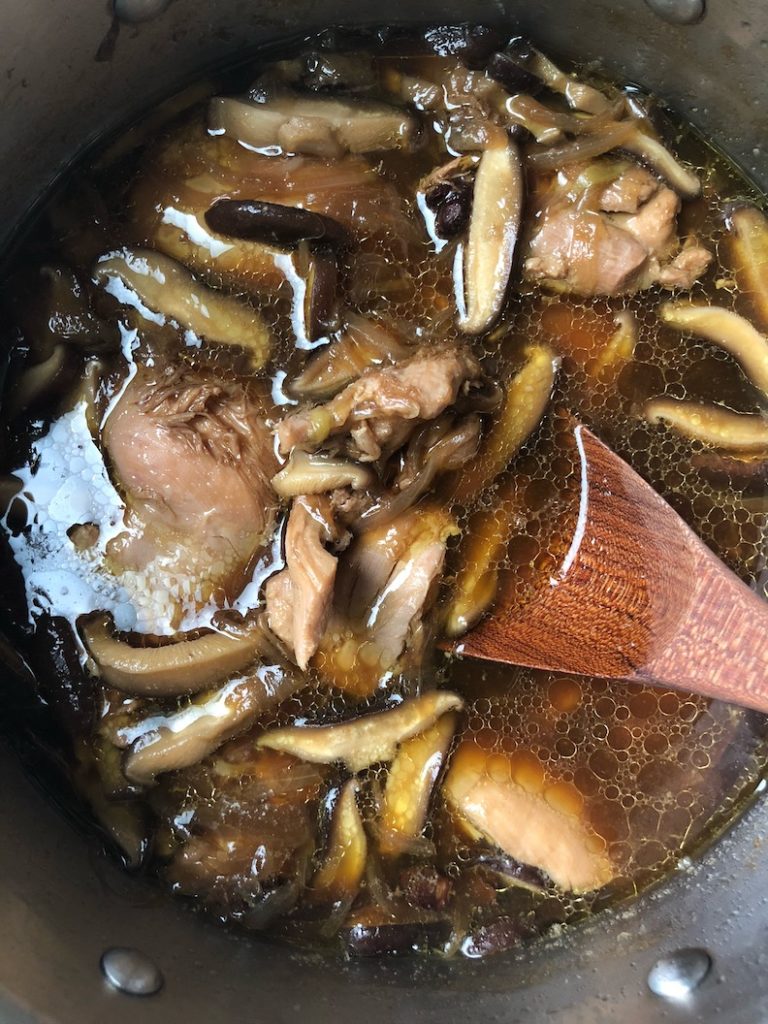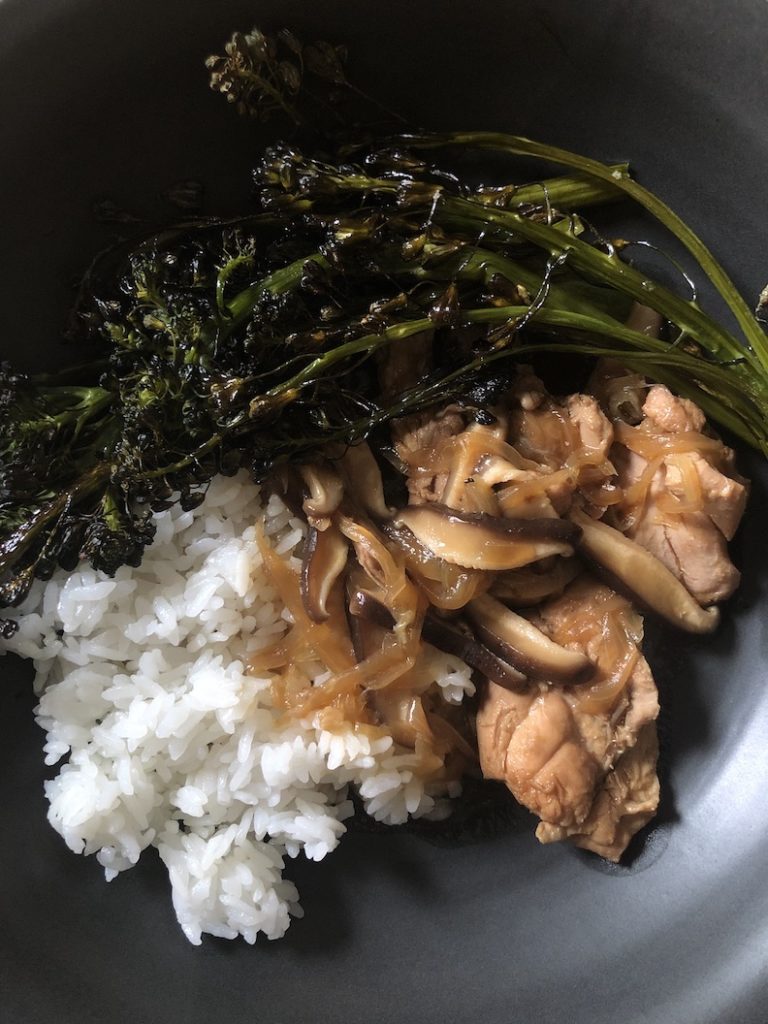soy-lemon chicken stew
by Petit Riz

These past few months, I’ve been thinking about my mother’s cooking—how in some ways her flavors and techniques have stayed the same, are so recognizable to me, and how in other ways, they have dramatically changed over the years. Something strange happens when we seek out the flavors from our childhood and realize they’re no longer quite there. That dissonance is a bit jarring, but isn’t it natural that my mother’s cooking would change over time? I see it with my own cooking and how it’s evolved since my early twenties. I use the oven much more, out of convenience but also because our current kitchen has no ventilation. I’m a more adventurous cook with a wider repertoire. I’m also lazier now that I find myself preparing lunch and dinner for two on most days, and it can be hard to remain inspired. How easy it is to eat a bowl of fried rice with eggs, or a salad.
Last year I rediscovered a recipe from my childhood that my mother used to make but hasn’t cooked in years. A chicken stew with soy sauce and lemon. I can’t remember the last time she made it—maybe when we still lived in Australia? Either way, it’s a recipe that’s lived on through her ex-husband, who makes a simplified version once a week, and a recipe I’ve now adopted as my own. I found it in an email my mother sent me in 2011. Here is what she wrote:
I learned this very simple recipe when I was at Oxford studying English in a finishing school, just after graduating from high school in Tokyo. I was talking about food with a friend from Hong Kong, and he said: “You know there is this very simple Chinese recipe. You toss everything in a pot and boil it.” “Really?” I said. “How wonderful.” He gave me the following recipe: Buy a whole chicken and cut at the joints into smaller pieces. Add one big onion, the juice of one lemon, sugar, soy sauce, and water. Boil until the chicken is tender and serve with rice.
It turned out delicious for the hungry student that I was. Well, over the years, I’ve modified the recipe slightly. I use skinless chicken and eliminated the sugar, then I sautéed the onion and measured the soy sauce and lemon juice. I added mushrooms to make it more “respectable” for guests.
The first time I made this dish in the spring of last year, I wanted to recreate my mother’s cooking. I didn’t know when I’d eat her food again. I followed her measurements and served the stew in a bowl with short-grain rice. Just from the scent I recognized her: the combination of shoyu and lemon, the fragrance of freshly stirred rice. I took a bite and there it was, my childhood in one mouthful.
My mother experimented with several diets throughout my childhood. My older brother rebelled and ate whatever he wanted: pizza, instant ramen, big bowls of cereal with milk, white rice. But as the younger child, I had to follow my mother’s rules without complaining. I ate bowl after bowl of brown rice with beans and vegetables, sometimes bringing a thermos of food when I was invited to a friend’s house; I avoided dairy believing something terrible and irreversible would happen if I ate it; and I longed for all the sweets I couldn’t have. When we returned to France, my mother became more flexible, and soon we had baguette and butter for breakfast, spaghetti for dinner, sometimes even pizza covered with cheese. Her cooking, also, transformed. She introduced more meat and fish, and although her “base” was always Japanese, she absorbed influences from France and then America, cooking artichokes, rabbit stew, Brussels sprouts, and kale. Now when I visit, she’ll bring home pastries from the farmers market.
I’m glad we’re no longer beholden to her diets, that I can eat cheese around her and bake cakes with sugar in her kitchen. (She would be horrified if she knew about all the pastries and sweet treats I eat in New York.) But a small part of me mourns the food from those years—because of how it nourished me from breakfast through dinner, how it taught me to appreciate vegetables and create a balanced meal with a few fresh ingredients, and for how it made me feel. As a child, I rarely had stomachaches and never felt bloated. I ate well and did not worry about over or under eating. I was fortunate that while certain foods were off-limits, she never restricted her use of olive oil and natural seasonings, and encouraged second helpings.
As I ate the chicken stew in the spring, I also recognized that it might feel too virtuous for most. I made a few small changes to bring out the flavors, and to quote my mother, “make it more respectable for guests.” I added back the sugar she had cut out and put in star anise. I swapped out the white button mushrooms for shiitake. The broth is more concentrated than the original. On the side, I roasted broccolini until it was crisp and almost charred—something my mother would also be horrified by, as “anything slightly burnt” is bad for you. I loved how the smoky flavors from the broccolini paired with the stew.
Without further ado, here is the soy-lemon chicken stew.


This recipe serves 3 to 4. You can double the quantities for a bigger batch; the leftovers are even more delicious the next day.
Soy-Lemon Chicken Stew
2 tablespoons extra-virgin olive oil
1 yellow onion, thinly sliced
Coarse salt
1 to 1.5 lbs boneless skinless chicken thighs
¼ cup soy sauce
1 tablespoon sugar
2 star anise
1 lemon
7 oz shiitake mushrooms, thinly sliced (about a handful)
Cooked short-grain rice, for serving
Roasted broccolini*, for serving
Heat olive oil in a large pot over medium. Add onion and cook, stirring often, until translucent and softened, about 8 minutes. Season with salt. Increase heat to medium-high and move onions to the side. Add more oil if the pot is dry, then add chicken. Season with salt and cook, stirring halfway through, until chicken is lightly browned, about 3 minutes. Add 2 cups water, the soy sauce, sugar, star anise, and juice from half the lemon. Bring to a simmer and cook, uncovered, stirring occasionally, for 20 minutes.
Add shiitake mushrooms, stir to combine, and cook about 10 minutes more. The chicken should be very tender and the sauce aromatic. Taste and add more lemon juice or soy sauce, if desired. Fish out star anise and discard. Serve stew over rice with broccolini.
*For the roasted broccolini, I toss it on a baking sheet with olive oil and salt and pepper, and roast at 400ºF, stirring from time to time, until very crispy and charred in spots.

sounds so simple, looking forward to trying it. loved your book btw
Thank you, Marianne!